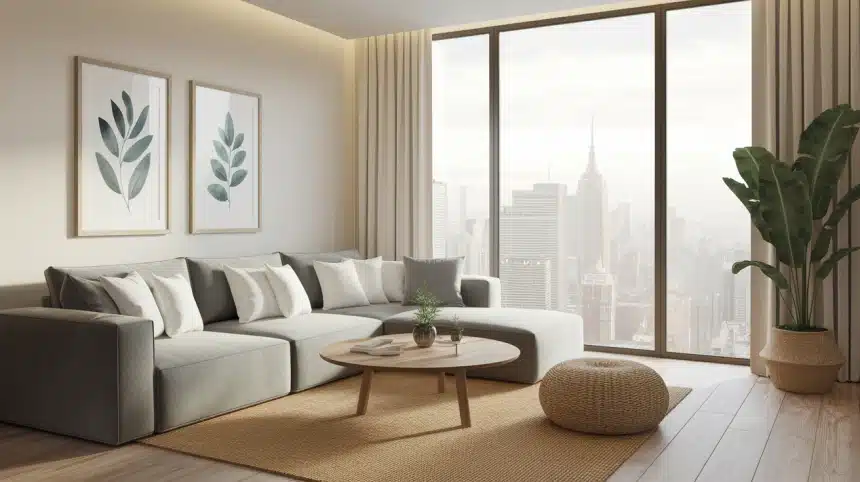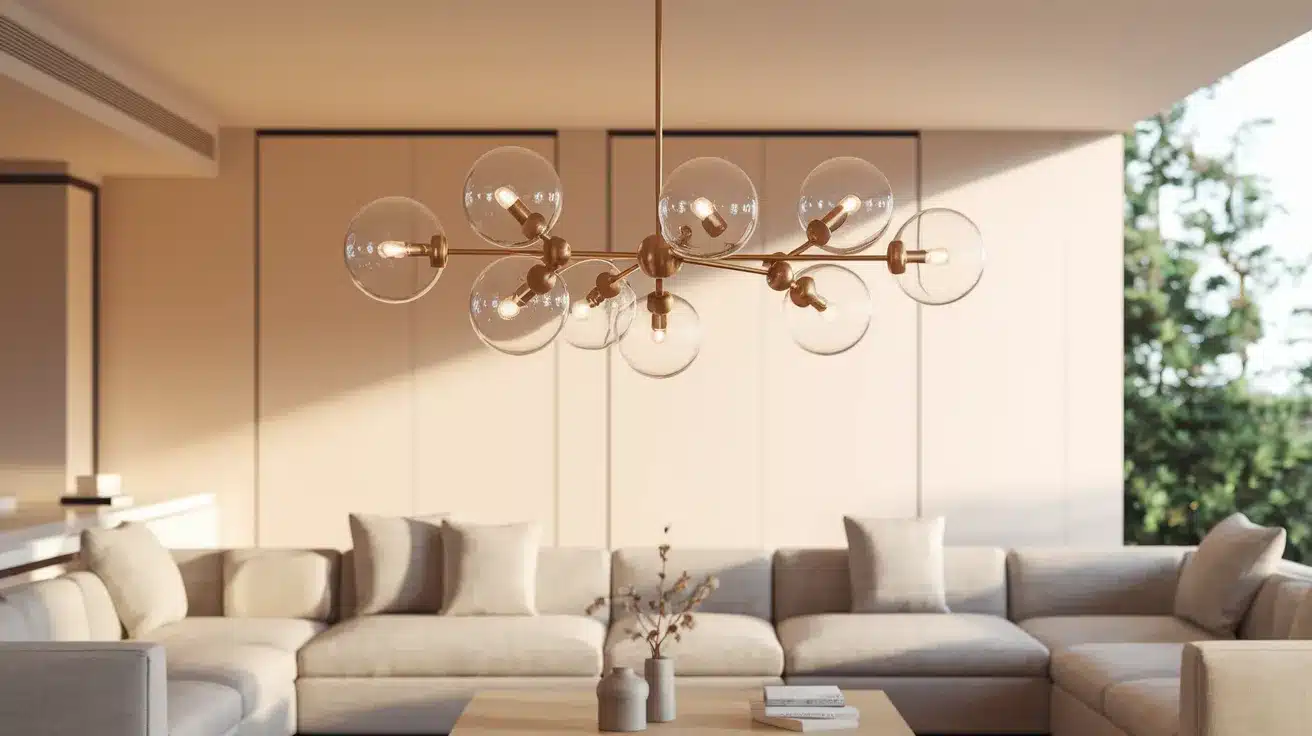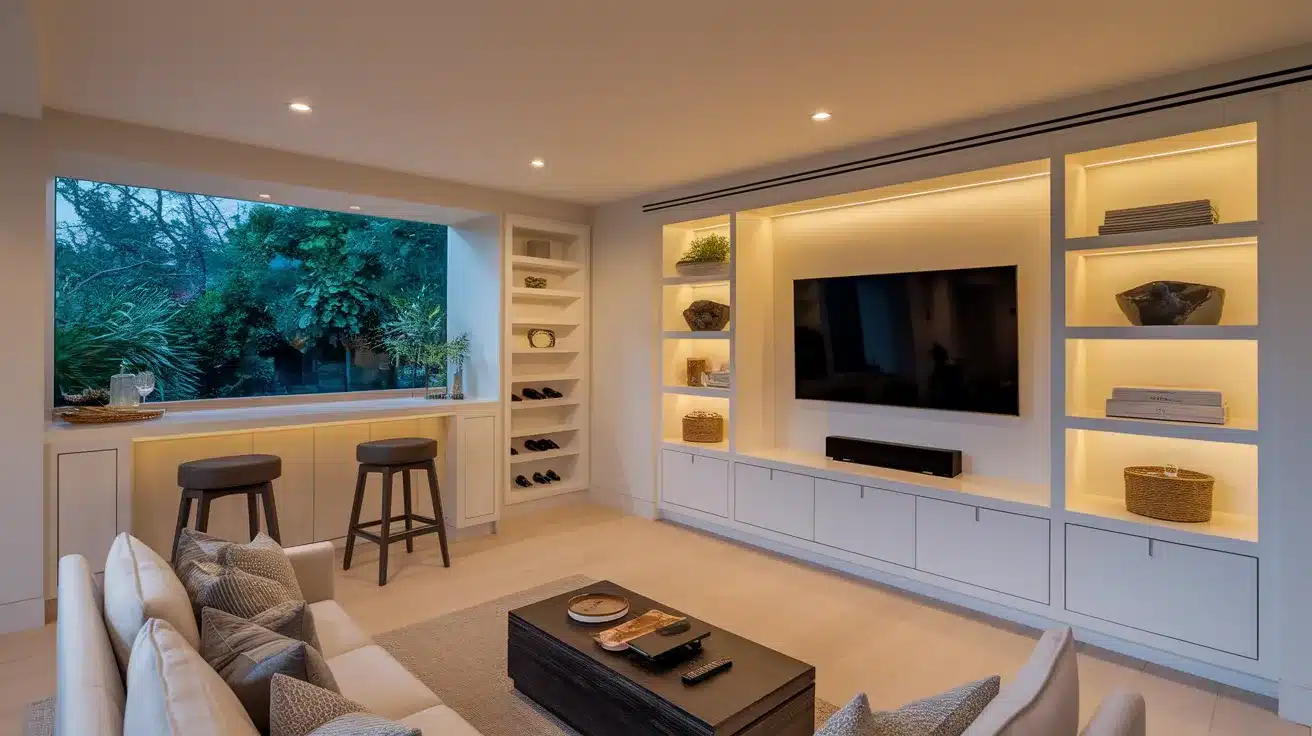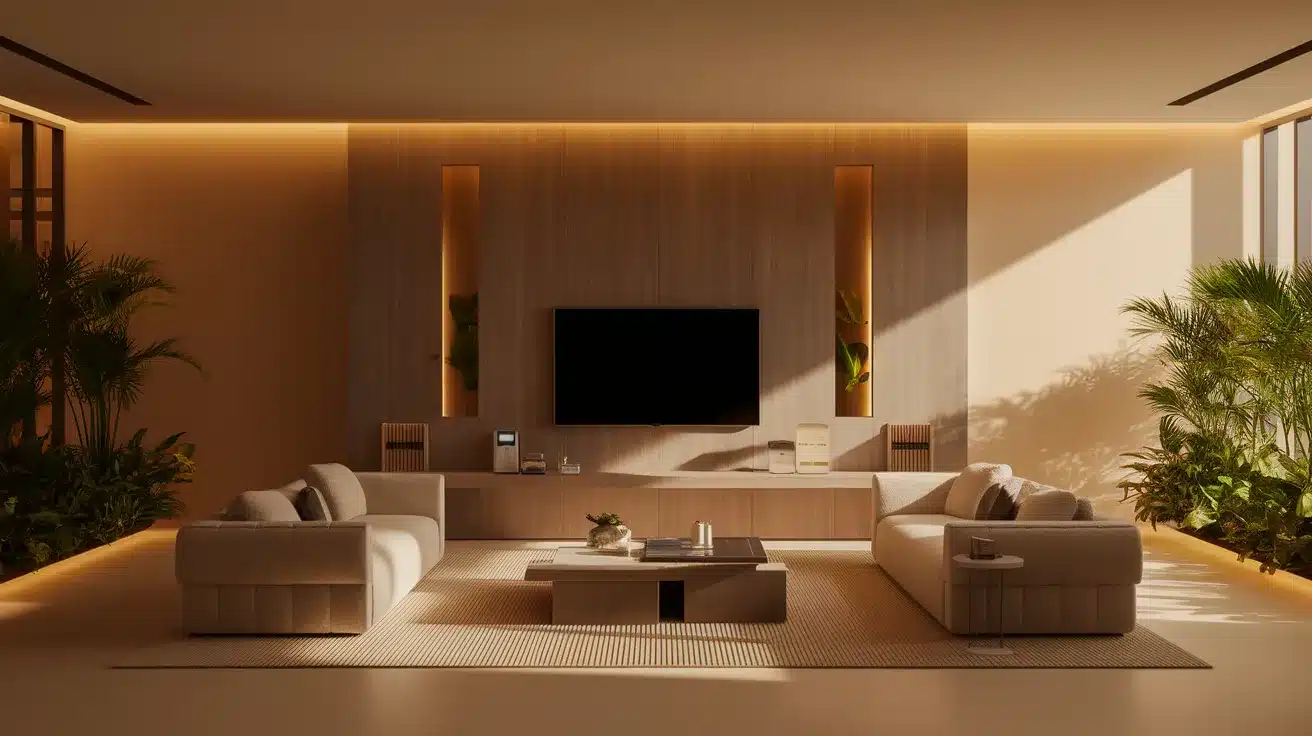- Top Modern Aesthetic Elements
- 1. Cuddly Furniture
- 2. Bold Statement Lighting
- 3. Curved Elements
- 4. Organic Flowing Design
- 5. Wellness-Focused Spaces
- 6. Sunset Metallics
- 7. Wireless LED Solutions
- 8. Multifunctional Home Offices
- 9. Strategic Color Pops
- 10. Cyberpunk Influences
- 11. Textural Focus in Neutrals
- 12. Sleek Minimalistic Pieces
- 13. Nature-Inspired Elements
- 14. Pastel and Muted Palettes
- 15. Home Entertainment Areas
- 16. Japandi Fusion
- 17. Biophilic Integration
- 18. Contemporary Clean Lines
- 19. Functional Minimalism
- 20. Statement Art Pieces
- 21. Mixed Material Palettes
- 22. Smart Home Integration
- 23. Open Concept Layouts
- 24. Sustainable Material Choices
- 25. Modular Furniture
- 26. Monochromatic Schemes
- 27. Indoor-Outdoor Flow
- Value Breakdown of Popular Modern Design Elements
- Final Thoughts
Clean lines merge with smooth curves as the modern aesthetic shapes our visual surroundings. The first moment you notice a minimalist room stirs something basic yet refined within us.
Modern style isn’t just a trend – it shows our love for purposeful simplicity. It speaks through clean shapes and open space, making a quiet but strong statement.
Gone are the days of cluttered rooms and fancy details. Today’s design puts function first, where every piece must have a real purpose.
We love modern style because it matches how we want to live: with intention, meaning, and simple elegance. This perfect blend of purpose and beauty turns ordinary rooms into something special.
The Essence of Modern Aesthetic Design
Modern aesthetic transcends basic visual appeal to create spaces that tell a story through intentional design choices. It combines sleek, clean lines with bold statements that capture attention without overwhelming the senses.
This design philosophy puts function at its core but refuses to compromise on style or comfort. The result transforms sterile spaces into vibrant, livable environments where every element serves both practical and aesthetic purposes.
What makes modern aesthetics truly remarkable is its ability to create harmony through contrast.
Minimalism meets strategic color placement, natural elements complement technological integration, and personal expression finds balance with timeless design principles.
Top Modern Aesthetic Elements
Want to give your home a fresh, modern look? These simple design elements bring style and comfort without the clutter:
1. Cuddly Furniture
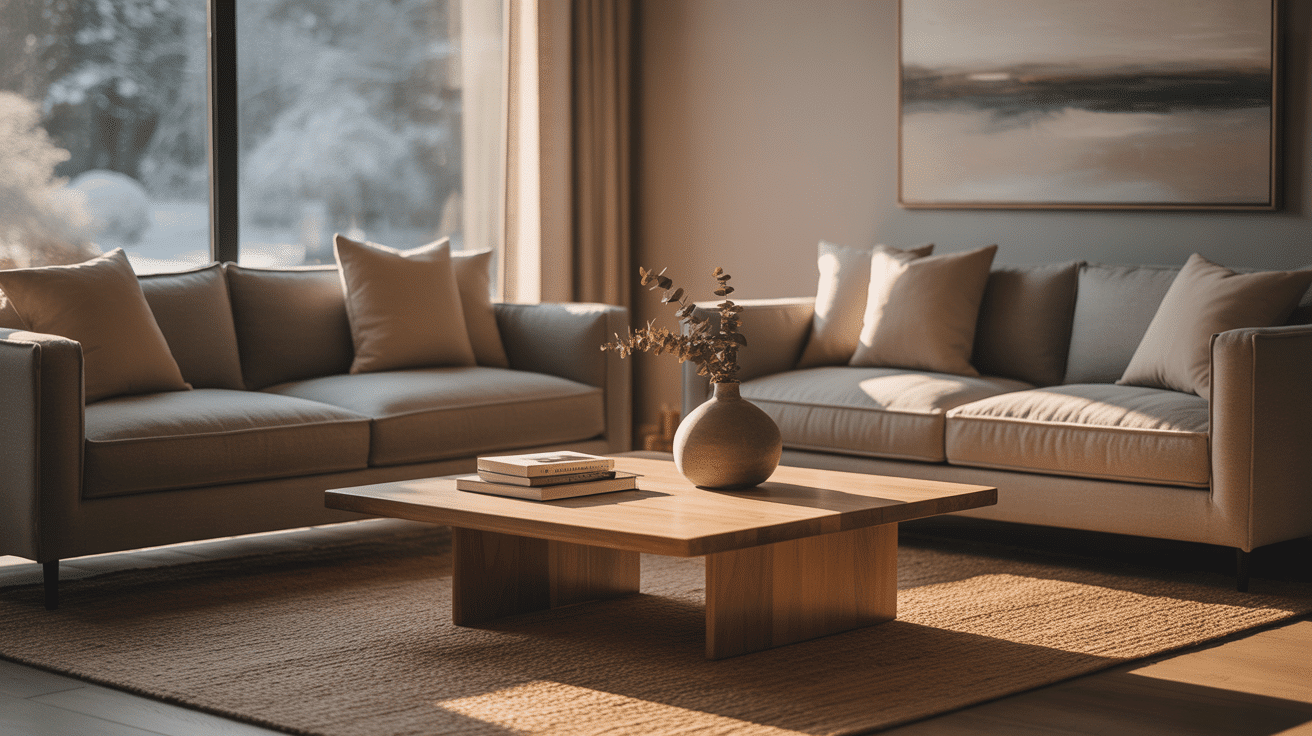
Deep cushions and body-embracing shapes create the ultimate comfort zone in living spaces. Modern living rooms now prioritize inviting designs that let you cocoon in your private world and disconnect.
These plush seating arrangements encourage relaxation and conversation in equal measure. The trend celebrates comfort without sacrificing sophistication or visual appeal.
2. Bold Statement Lighting
Oversized, curvy floor lamps, shapely chandeliers, and dramatic wall sconces add distinctive personality to modern spaces. Look for natural materials, sculptural forms, and unexpected color combinations.
Vintage lighting inspirations are making a strong comeback, reimagined with contemporary materials. These statement pieces often serve as functional art rather than mere illumination.
3. Curved Elements
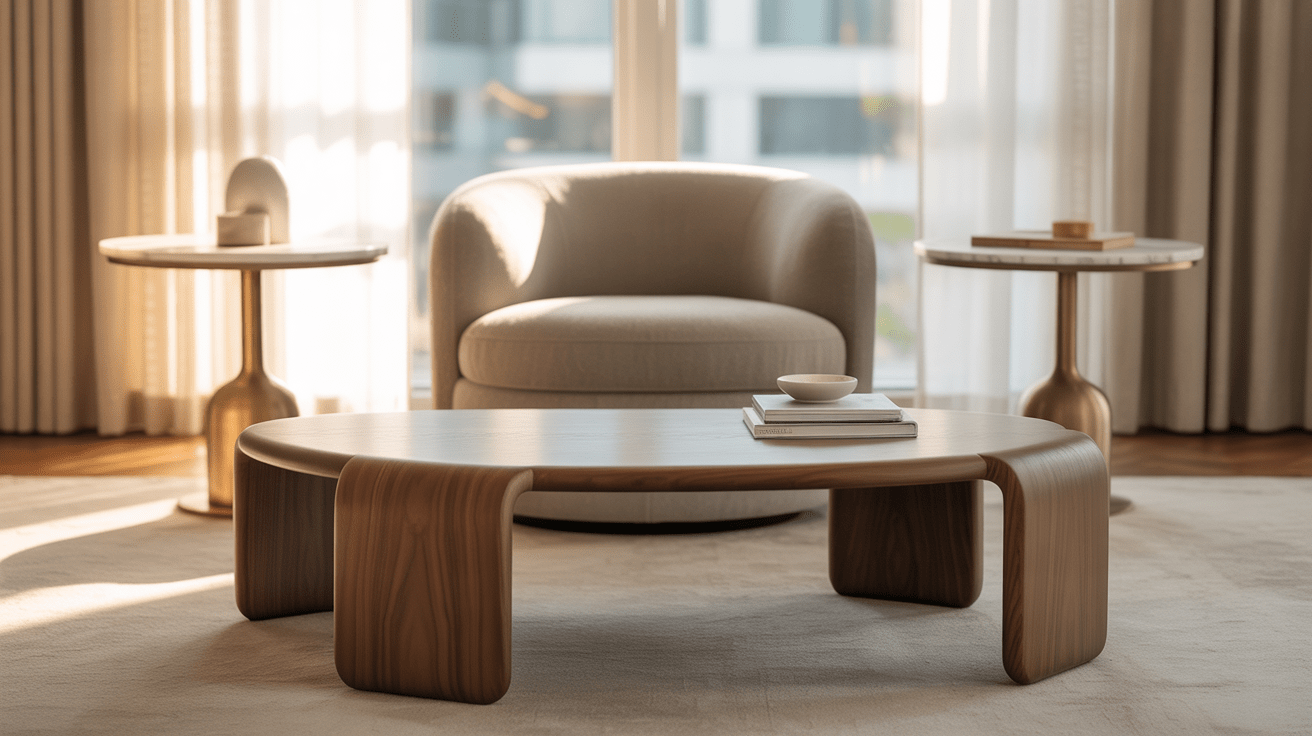
Say goodbye to sharp table edges and rigid furniture lines. Modern aesthetic embraces friendly curves in side tables, coffee tables with curved legs, and wooden accent chairs designed around organic shapes.
These softer profiles create visual flow and enhance the welcoming atmosphere of a room. The gentle contours invite both touch and visual appreciation.
4. Organic Flowing Design

Curved lines extend beyond furniture to walls, niches, arches, and fixtures. This approach creates visual movement and softens spaces for a more inviting environment.
Architectural elements like rounded doorways and wave-inspired partitions define modern interiors. These flowing features connect different areas while maintaining distinct functional zones.
5. Wellness-Focused Spaces
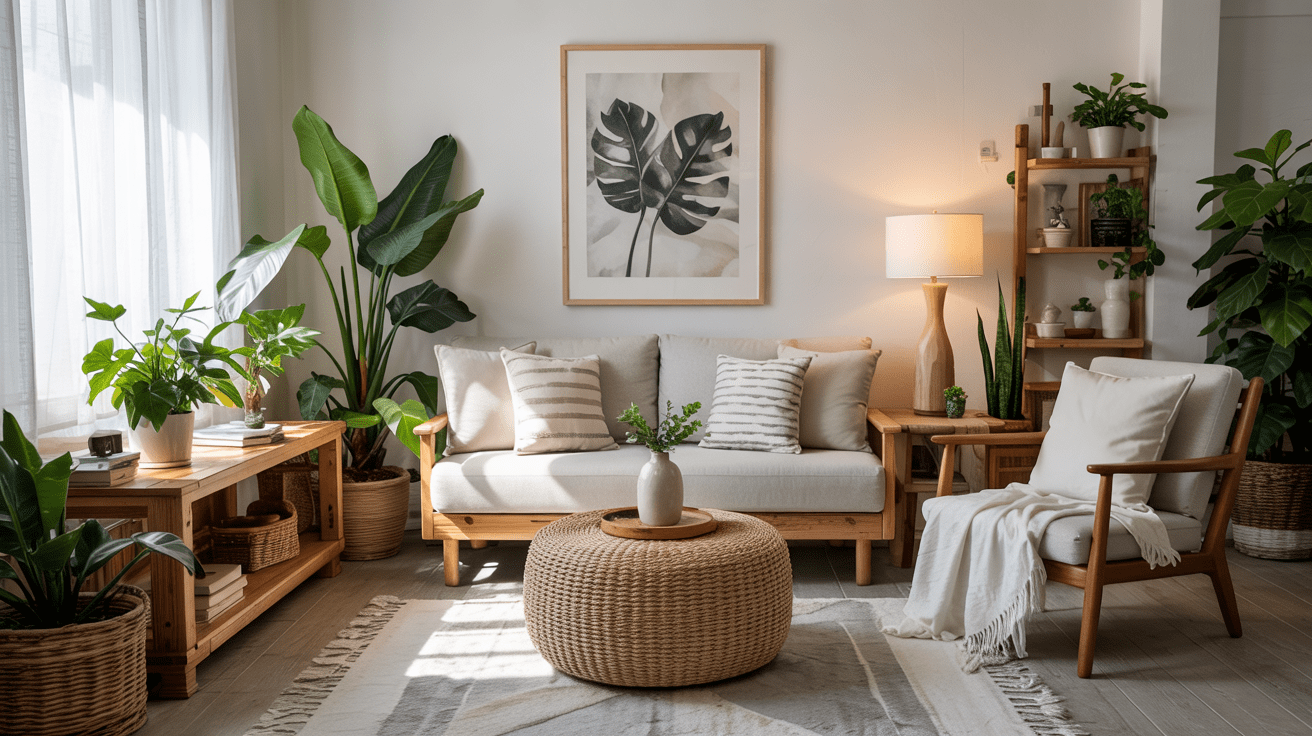
Modern home designs incorporate lifestyle concepts that enhance mental well-being alongside physical comfort. From French Joie de Vivre to Scandinavian hygge, these philosophies shape modern living.
Meditation corners, reading nooks, and spa-inspired bathrooms prioritize self-care and restoration. The modern aesthetic recognizes that beautiful spaces should nurture both body and mind.
6. Sunset Metallics
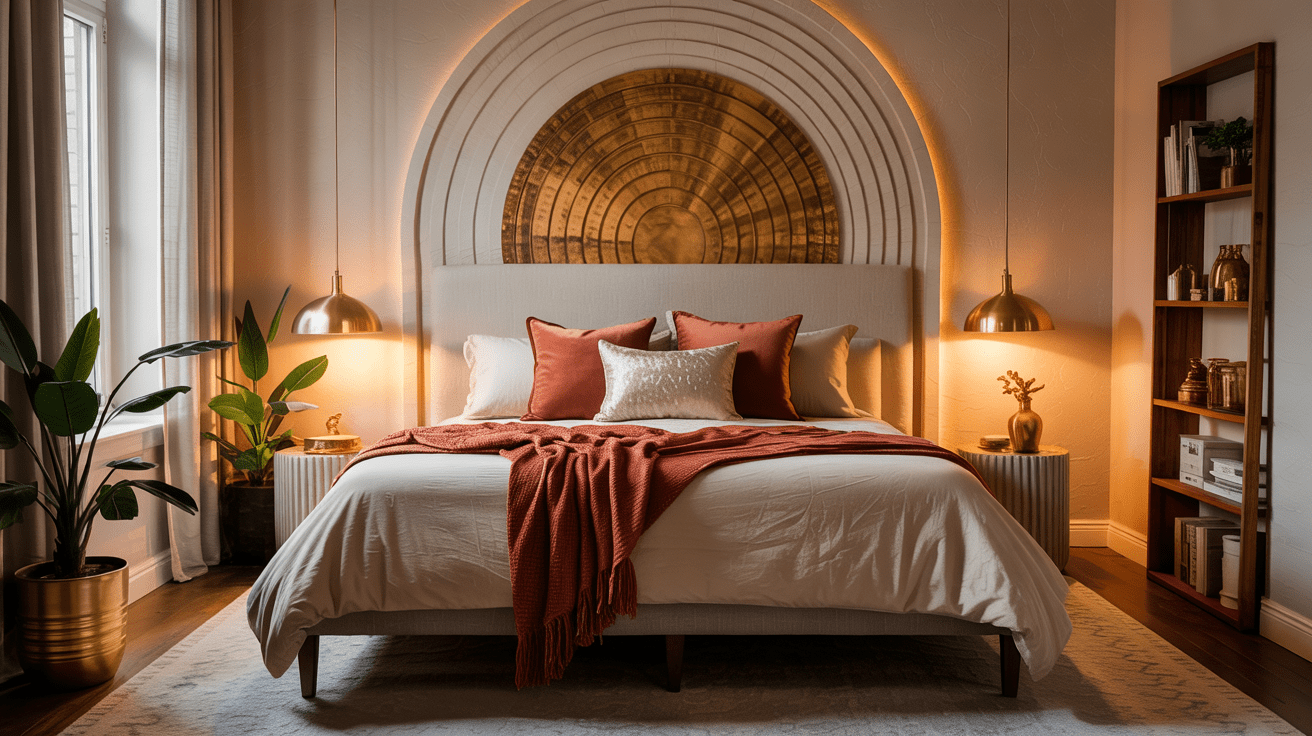
Warm golden finishes that evoke sundown are replacing cooler metal tones. These sunset-inspired metallics add warmth and depth to modern interiors.
Copper, brass, and rose gold accents create a rich, inviting atmosphere when paired with neutral backgrounds. The soft reflective quality mimics natural light at its most flattering hour.
7. Wireless LED Solutions
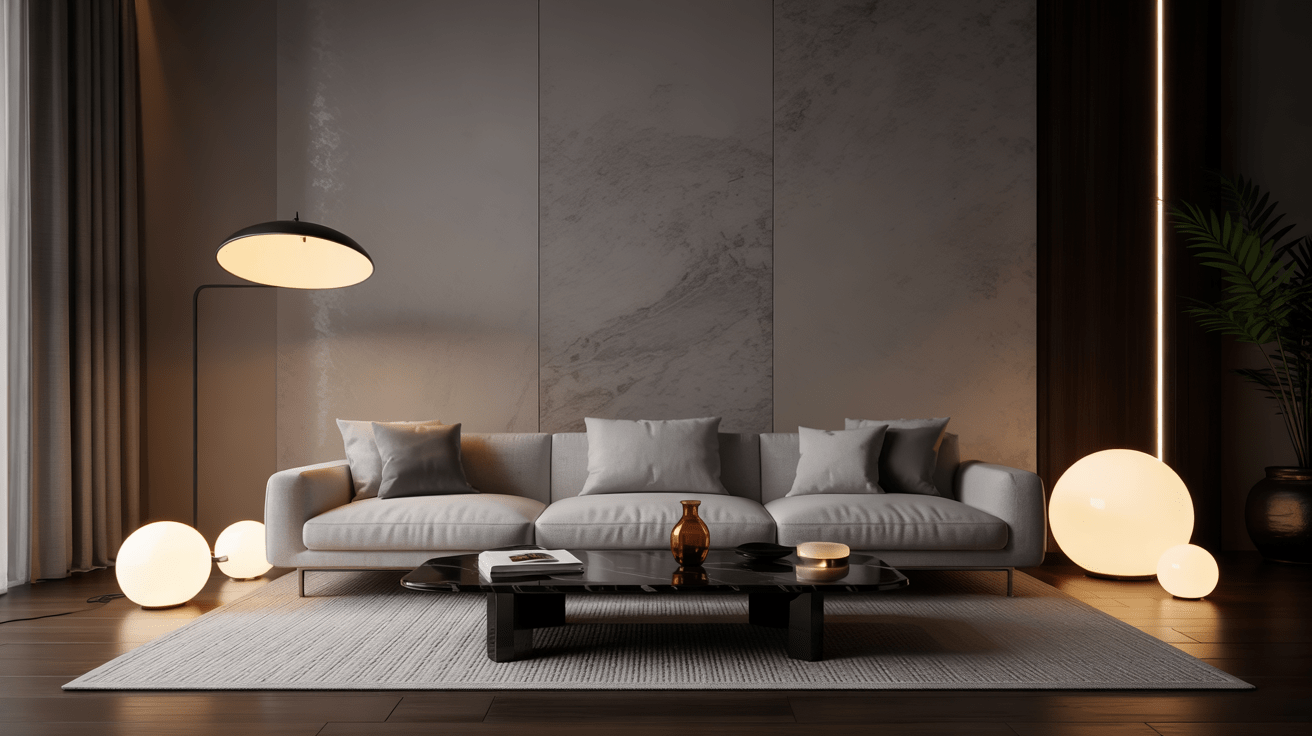
Portable LED lamps eliminate irksome wires while providing stylish lighting options. The newest designs combine convenience with striking aesthetics.
These flexible lighting elements allow for easy reconfiguration of spaces as needs change. Modern homes embrace technology that enhances lifestyle without creating visual clutter.
8. Multifunctional Home Offices
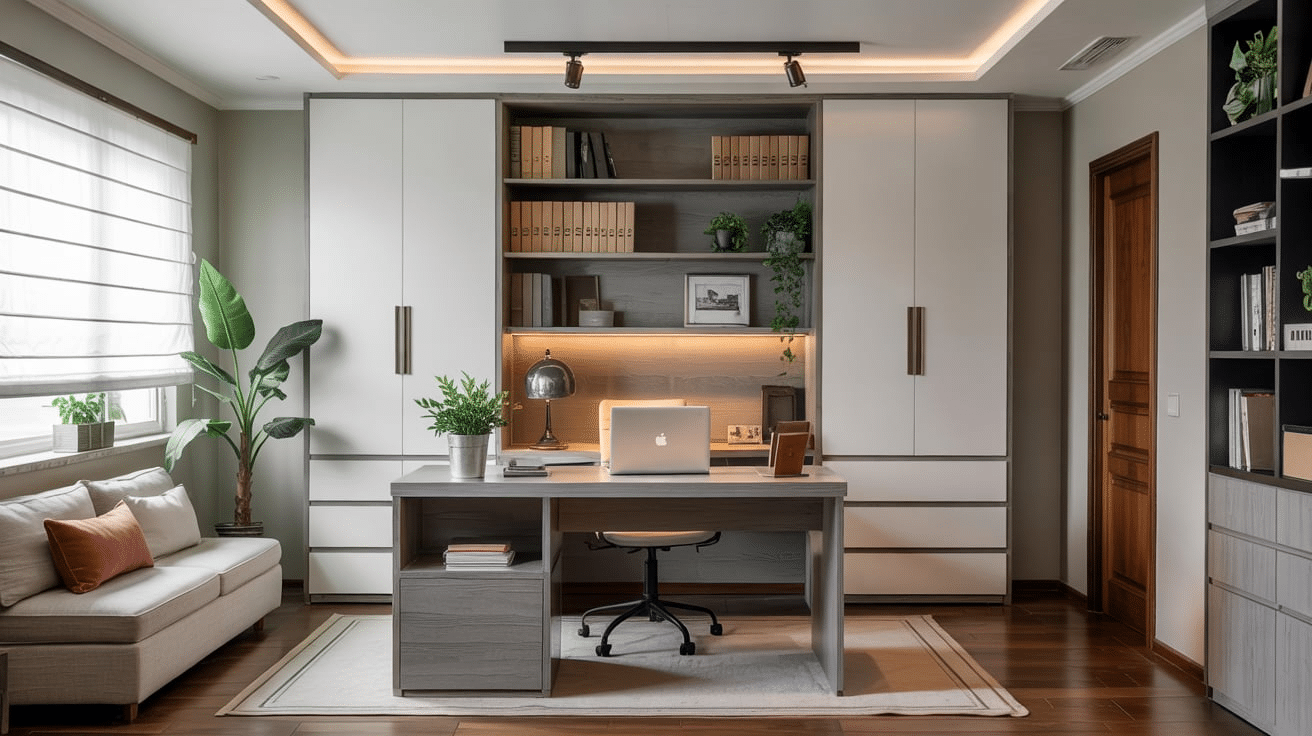
Built-in and hidden workspaces that seamlessly blend with living areas are essential in modern homes. These versatile areas combine storage and function while maintaining design cohesion.
Fold-away desks, convertible furnishings, and clever cabinetry make dual-purpose spaces possible. The modern aesthetic values efficiency without compromising on style or comfort.
9. Strategic Color Pops
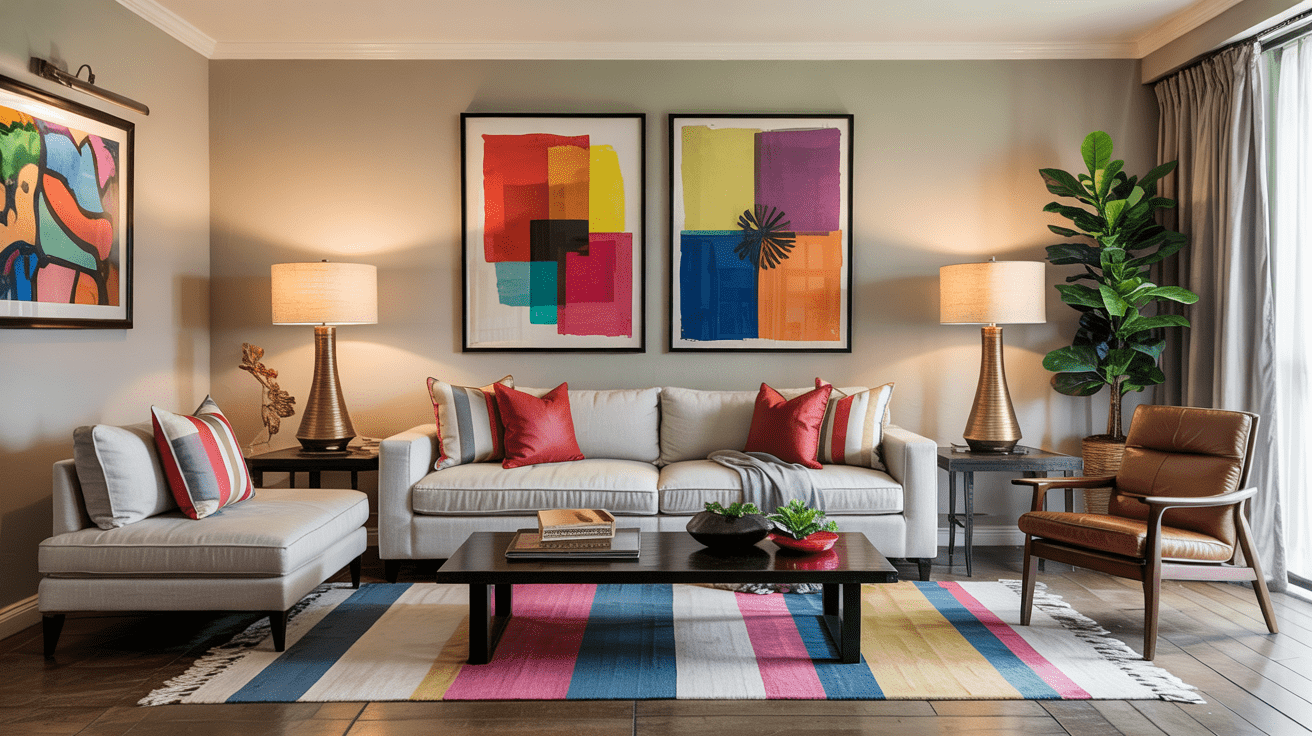
Vibrant color accents break up neutral spaces with unexpected flair. Modern rooms use color to define zones, highlight architectural features, or draw attention to key pieces.
These carefully placed color moments create visual interest and personality in otherwise restrained palettes. A single bold element can transform the energy of an entire space.
10. Cyberpunk Influences
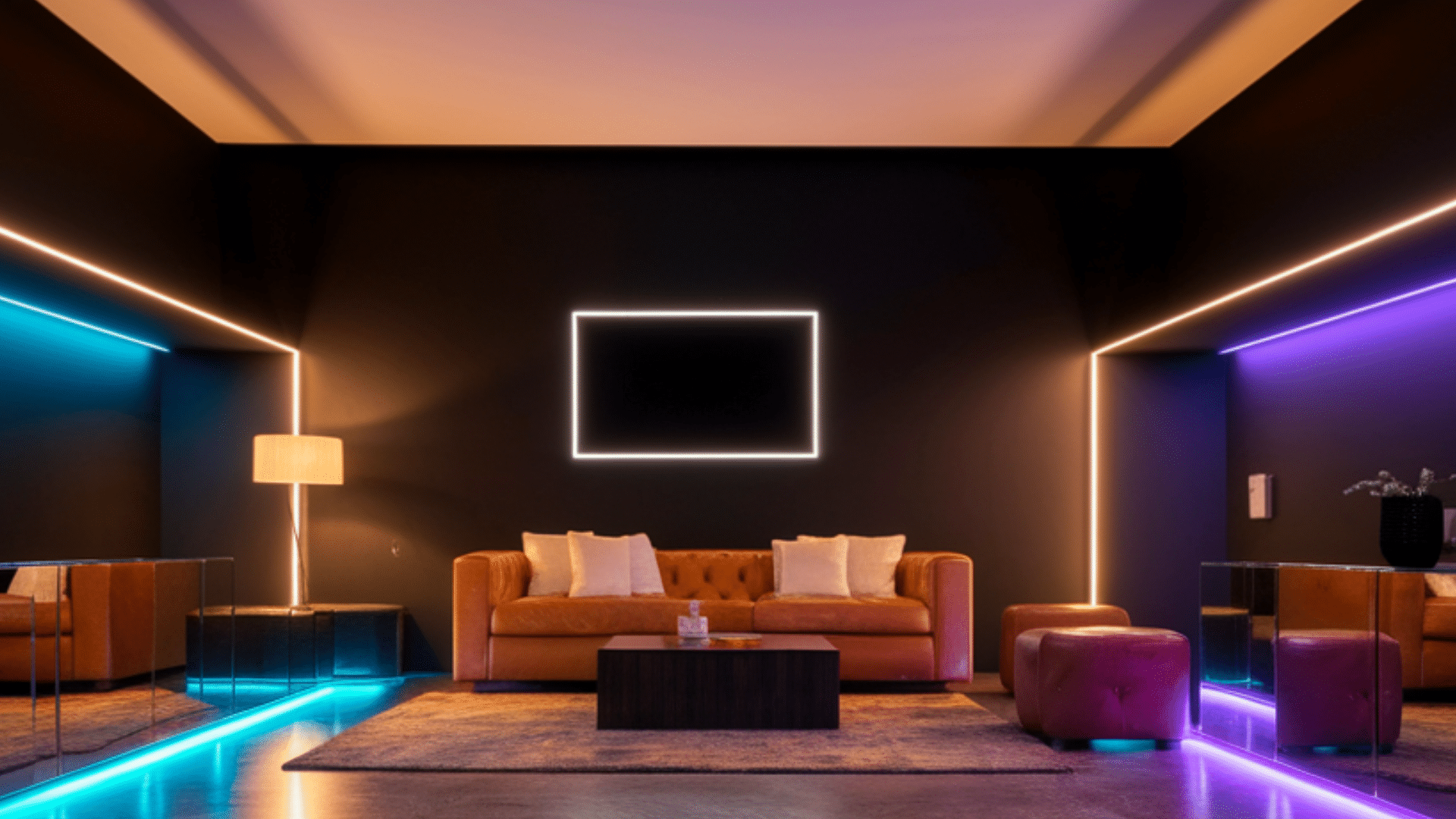
Technological advancements inspire modern aesthetics by fusing futuristic elements with nostalgic touches. Think Blade Runner-inspired lighting with classic materials.
LED strip lighting, reflective surfaces, and high-contrast color schemes create dramatic urban atmospheres. This modern interpretation balances digital innovation with human comfort.
11. Textural Focus in Neutrals
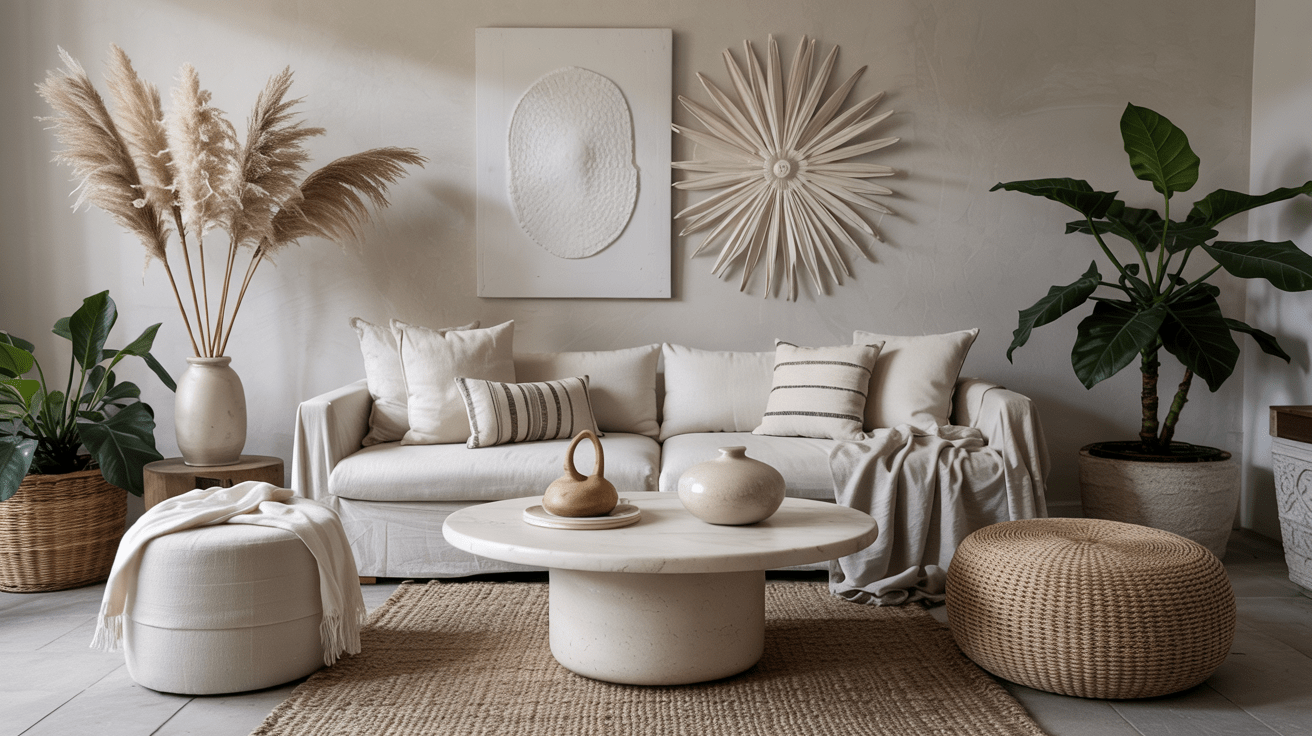
Modern minimalist spaces use varied textures and strategic negative space to create depth and interest. The emphasis shifts from color to tactile qualities.
Bouclé fabrics, ribbed surfaces, and natural stone finishes engage the senses without overwhelming the eye. The layering of similar-toned textures creates sophisticated, serene environments.
12. Sleek Minimalistic Pieces
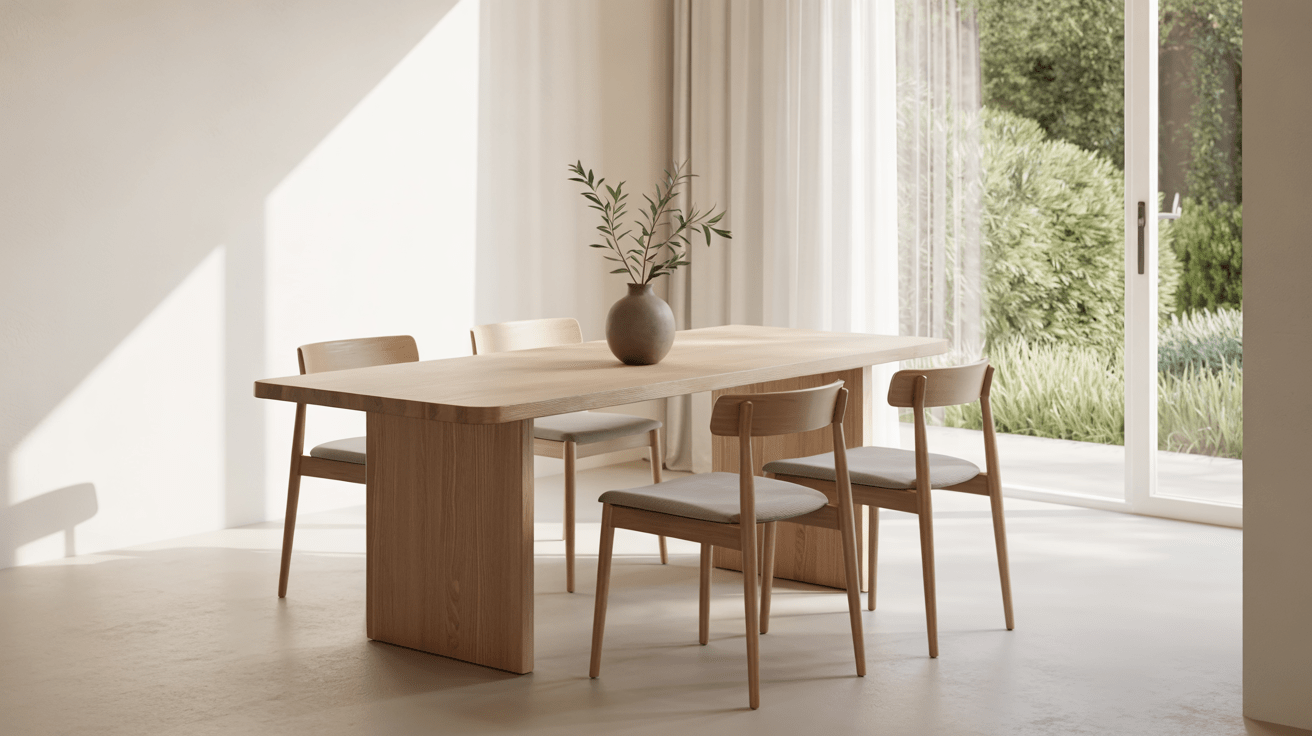
Statement sculptural elements with clean lines provide effortless elegance. Look for matte surfaces, abstract shapes, and artistic forms in ceramics and furniture.
These refined pieces often serve as the focal point in carefully edited spaces. Modern aesthetic values quality and intentionality over abundance.
13. Nature-Inspired Elements
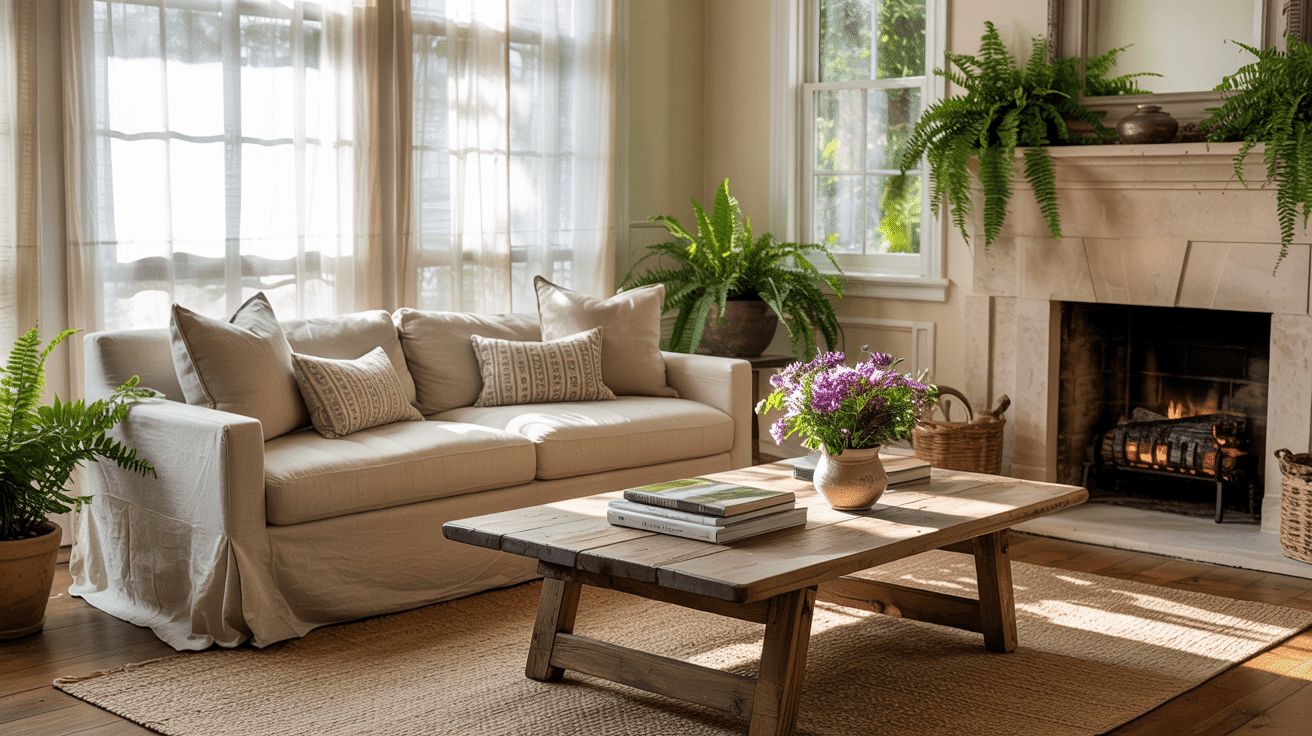
Organic styling with plants and natural materials creates a connection to the outdoors. Indoor gardens, living walls, and natural fibers ground modern spaces.
These biophilic elements improve air quality while satisfying our innate need for natural connection. Modern design acknowledges that nature enhances both physical health and aesthetic pleasure.
14. Pastel and Muted Palettes
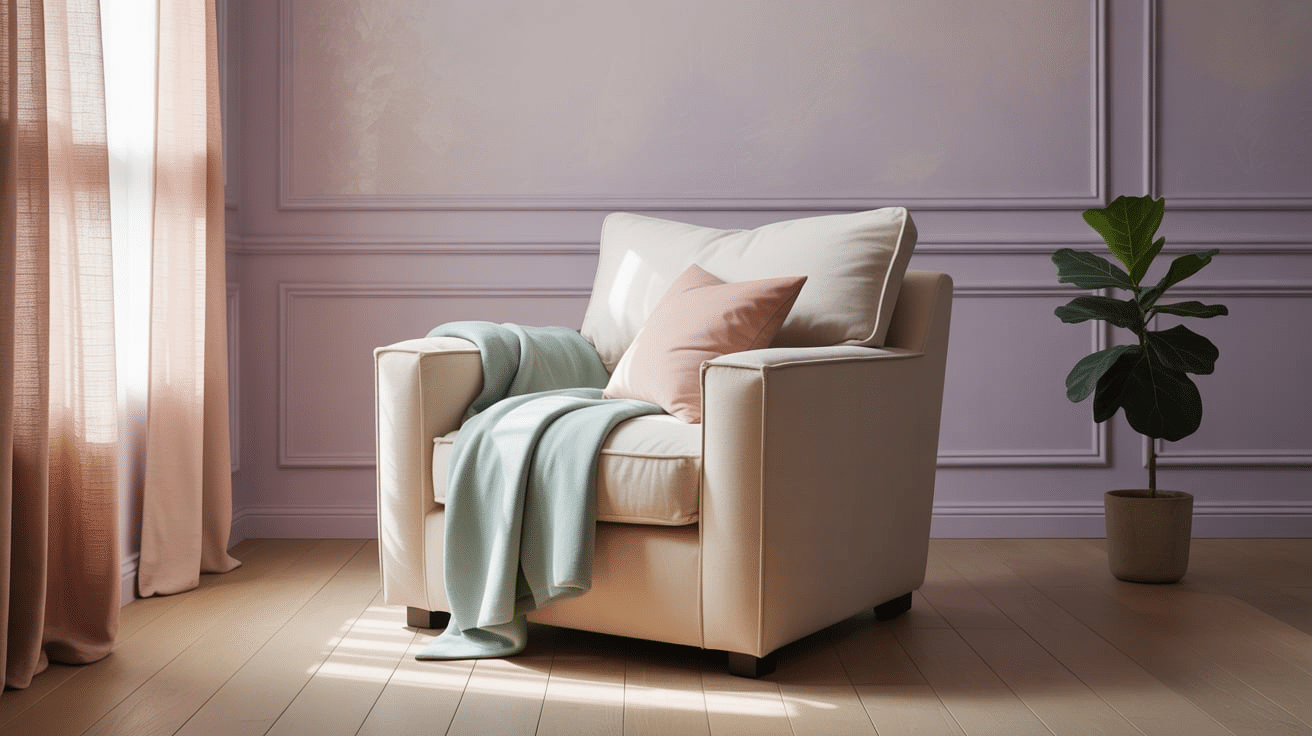
Calming, tranquil color schemes with lavender, sea blue, and muted greens create peaceful environments. These softer tones provide relief from visual noise.
The subtle sophistication of these palettes allows architectural details to shine without competition. Modern interiors often use these gentle hues to create restorative atmospheres.
15. Home Entertainment Areas
Sophisticated wine bars and entertainment zones offer stylish gathering spots. These dedicated spaces boost the social experience while maintaining design cohesion.
Built-in beverage centers, media walls, and conversation areas reflect modern hospitality values. The trend acknowledges our homes as the center of both relaxation and social connection.
16. Japandi Fusion
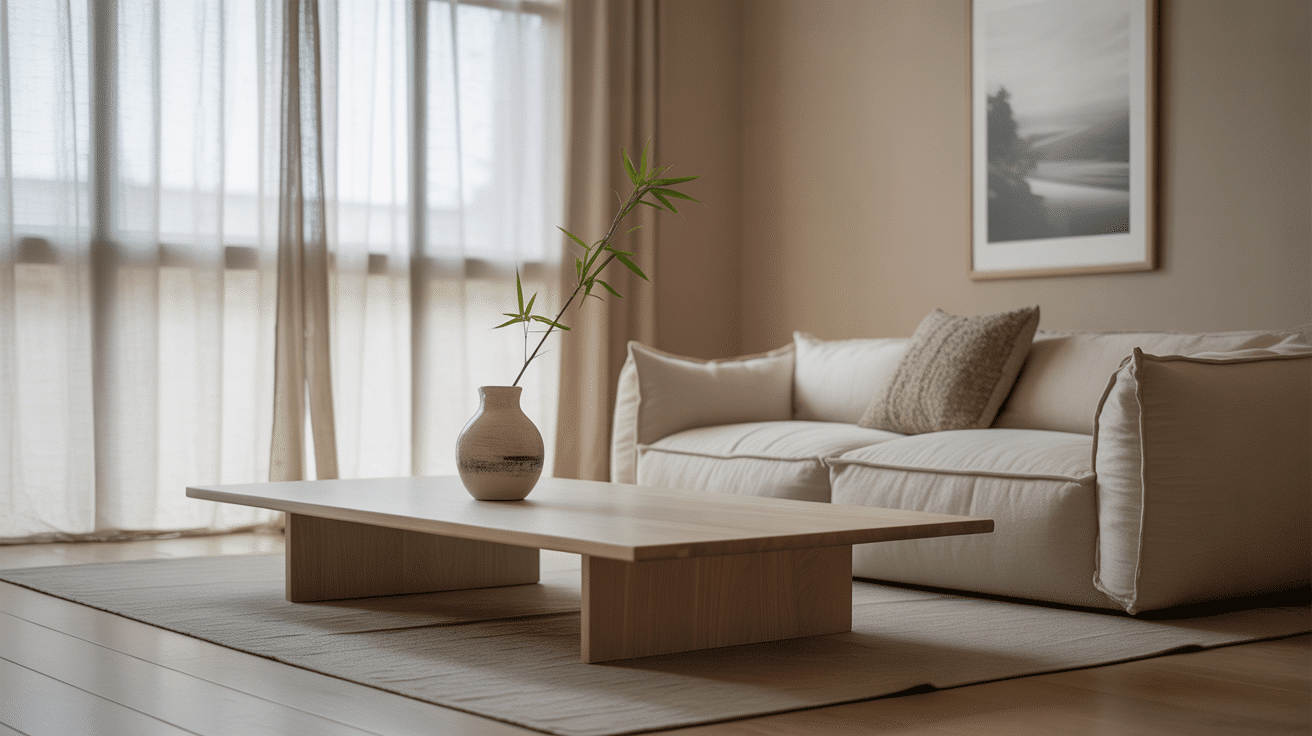
This blend of Japanese minimalism and Scandinavian functionality creates harmonious, uncluttered spaces. The style combines warm woods, neutral tones, and intentional simplicity.
Handcrafted elements and natural materials feature prominently in this tranquil aesthetic. Japandi designs value quality, craftsmanship, and purposeful beauty.
17. Biophilic Integration
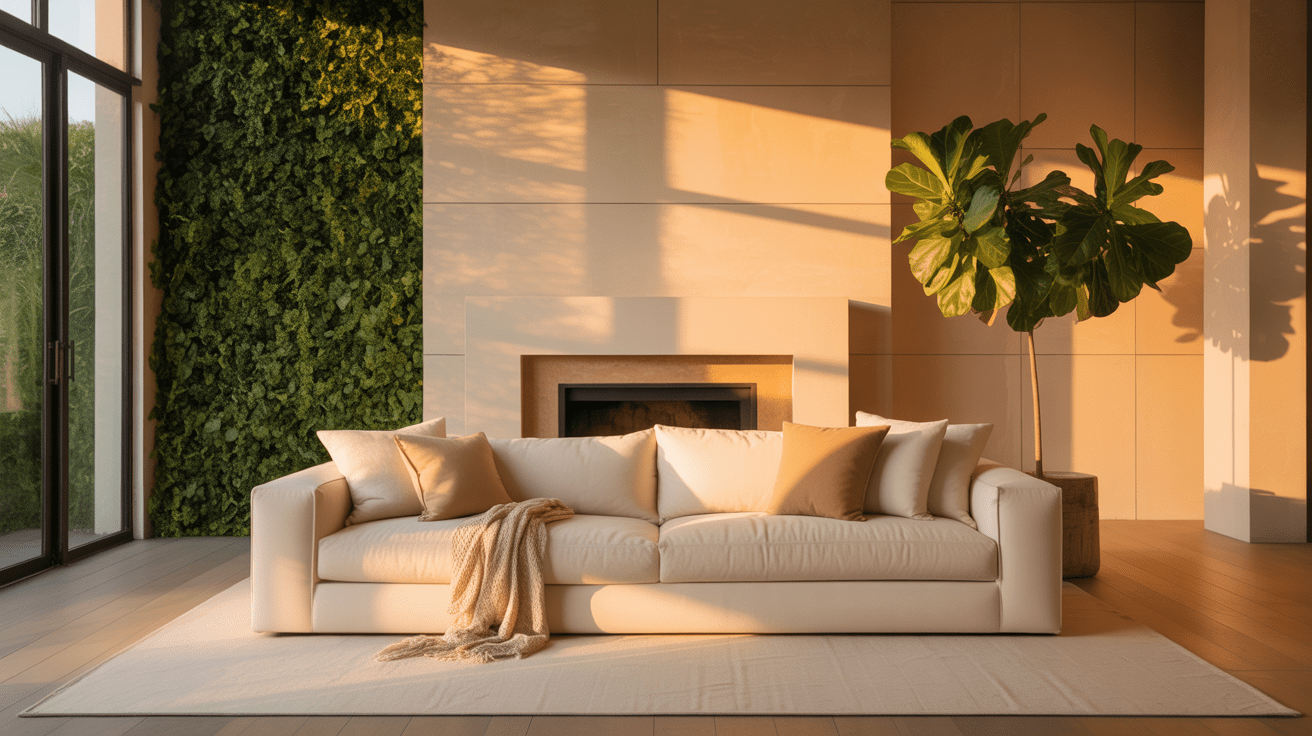
Modern design connects interior spaces with nature through materials, light, and vegetation. Large windows, natural materials, and indoor-outdoor flow create environmental harmony.
Living walls, water features, and natural ventilation enhance wellbeing through sensory engagement. This holistic approach acknowledges our fundamental connection to natural environments.
18. Contemporary Clean Lines
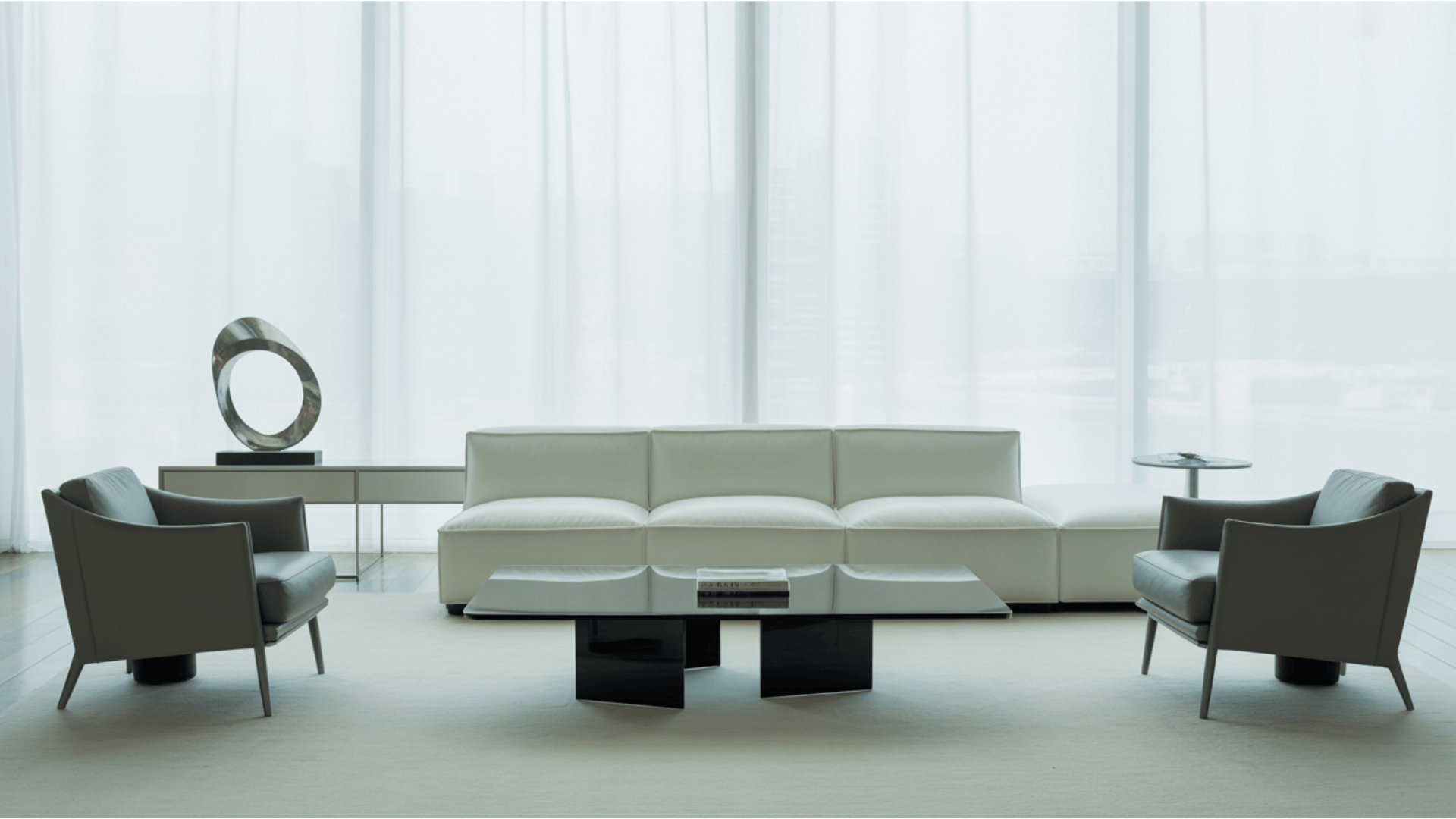
Refined, streamlined surfaces without unnecessary ornamentation define the modern aesthetic. Every element serves both functional and visual purpose.
The disciplined approach to design creates calm, ordered environments that still feel welcoming. Modern spaces find beauty in precision and clarity of form.
19. Functional Minimalism
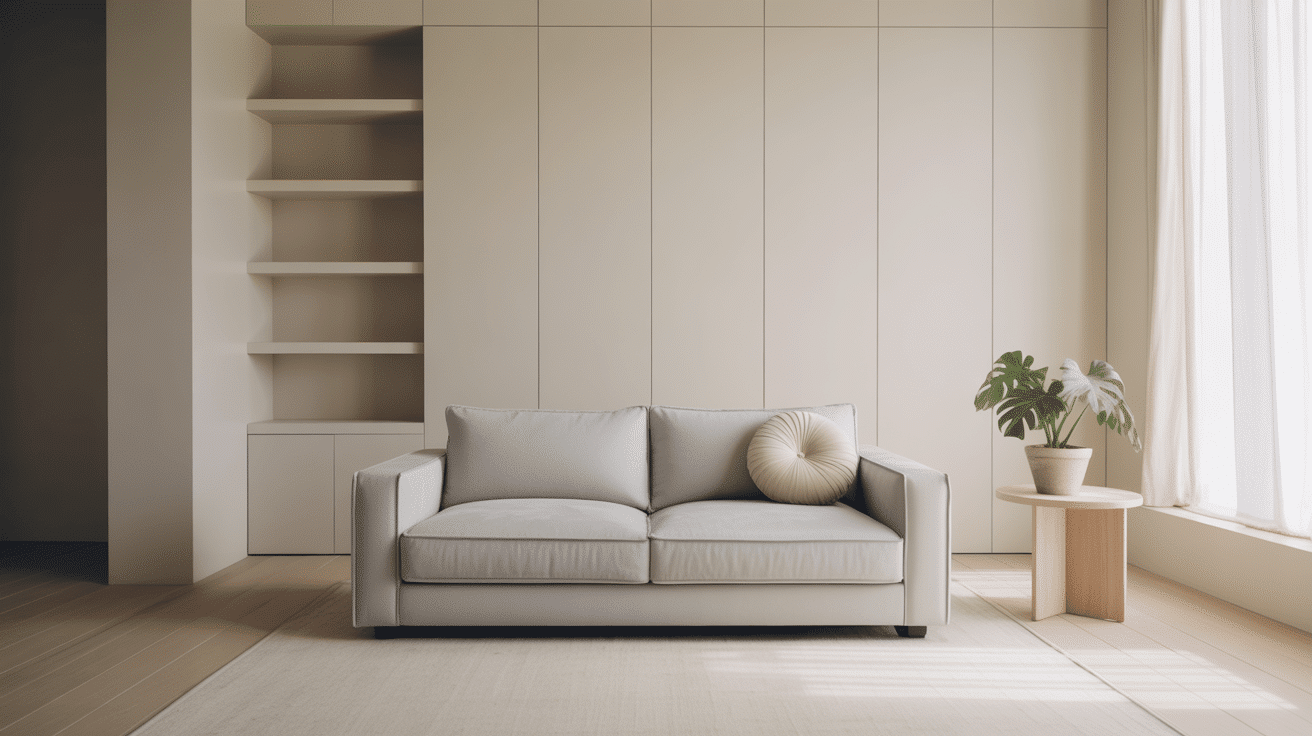
Modern spaces prioritize purpose while maintaining style. Each piece earns its place through both utility and beauty.
Storage solutions become design features rather than afterthoughts in this practical approach. The result is uncluttered spaces that support daily activities with ease and grace.
20. Statement Art Pieces
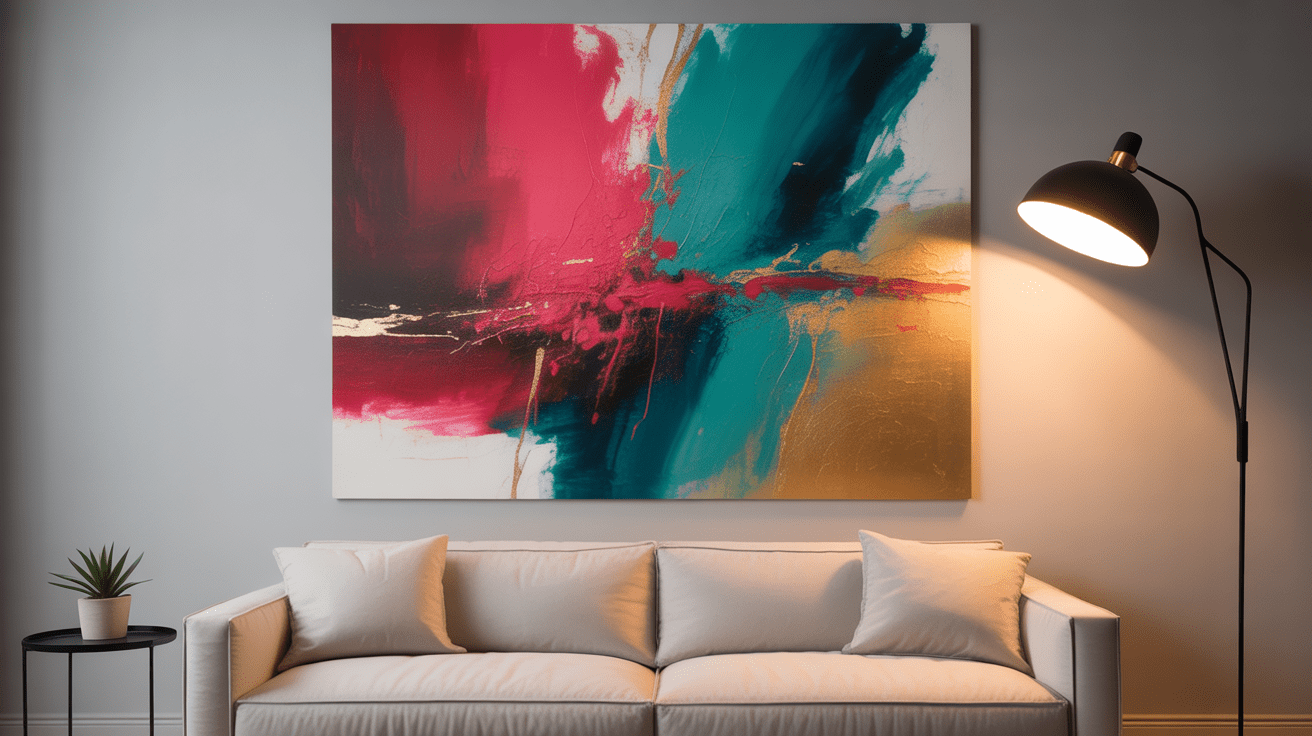
Bold, oversized artwork creates focal points in otherwise neutral spaces. These pieces often provide the color inspiration for the entire room.
Large-scale photography, abstract paintings, and sculptural installations define the personality of modern interiors. Art becomes an integral part of the architecture rather than merely decoration.
21. Mixed Material Palettes
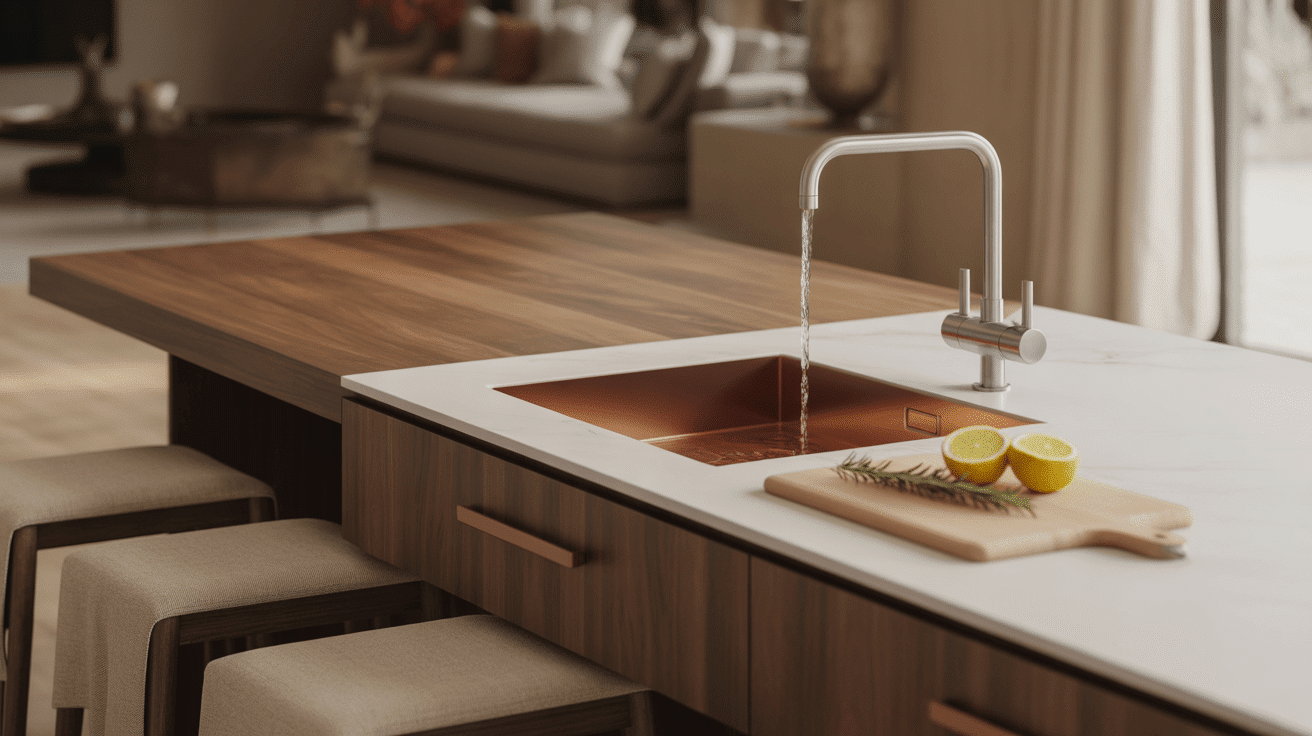
The juxtaposition of wood, metal, glass, and textiles creates visual interest through contrast. Look for unexpected combinations like brass with concrete or marble with wood.
These material dialogues add depth and sophistication to modern spaces. The contrasting textures create sensory richness within minimal design frameworks.
22. Smart Home Integration
Technology blends seamlessly with design elements for both convenience and aesthetic appeal. Hidden screens, wireless charging stations, and voice-activated systems disappear into beautiful surroundings.
Automated lighting, climate control, and security features enhance comfort without visual intrusion. Modern spaces embrace technology that serves without dominating.
23. Open Concept Layouts
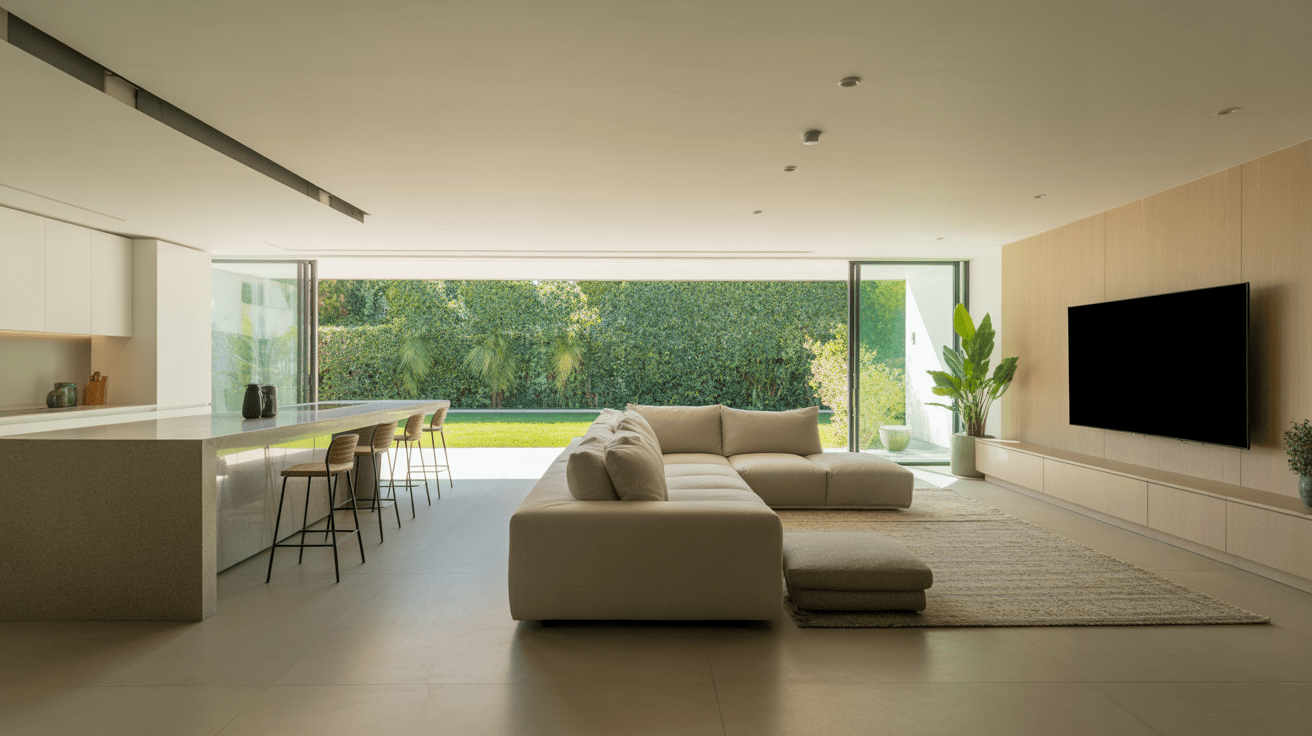
Flowing spaces with minimal barriers create a sense of spaciousness and connection. Modern floor plans prioritize sight lines and natural movement.
These uninterrupted spaces allow light to penetrate deeper into interiors while facilitating social interaction. Strategic furniture placement defines functional zones without rigid boundaries.
24. Sustainable Material Choices

Eco-friendly design elements, including recycled materials, energy-efficient systems, and locally-sourced products, align with modern values. These ethical choices reflect growing environmental consciousness without compromising style.
Reclaimed wood, recycled glass, and repurposed materials add character while reducing environmental impact. Modern aesthetic increasingly values the story behind the materials.
25. Modular Furniture

Adaptable pieces that transform for changing needs provide flexibility in modern homes. These versatile designs maximize functionality while maintaining aesthetic standards.
Sectional seating, expandable tables, and reconfigurable storage systems adapt to different activities and group sizes. Modern interiors acknowledge that our spaces must evolve with our changing lives.
26. Monochromatic Schemes

Sophisticated variations of a single color create depth through tonal nuance. These refined palettes provide a sense of cohesion and calm.
Different textures and finishes within the same color family create subtle visual interest. The restrained approach allows architectural details and furnishing silhouettes to take center stage.
27. Indoor-Outdoor Flow
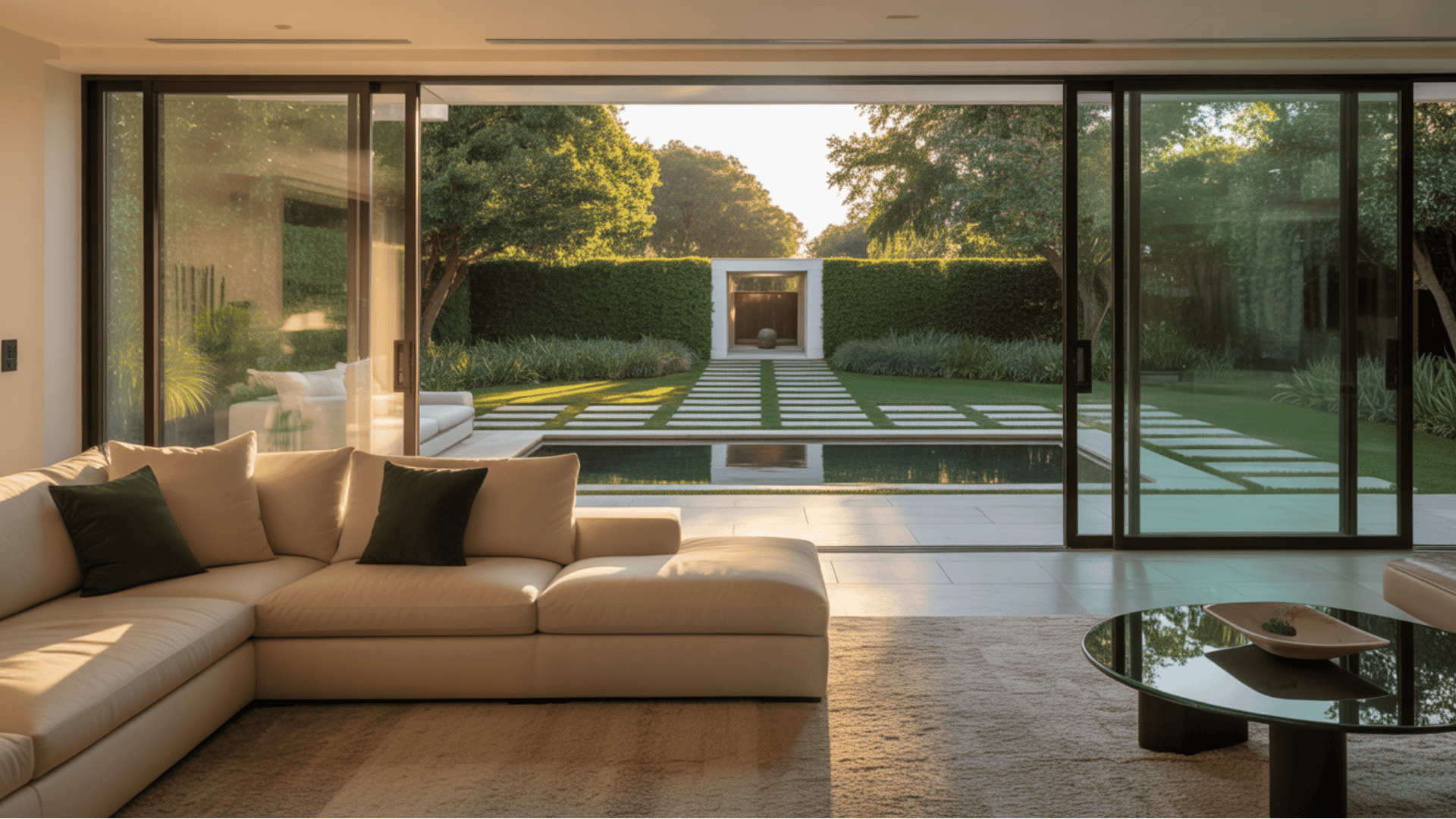
Blurred boundaries between interior and exterior spaces expand living areas and connect with nature. Glass walls, consistent flooring, and coordinated design elements create seamless transitions.
Covered patios, sunrooms, and courtyard gardens extend living space beyond traditional walls. This integration satisfies our desire for natural light and fresh air within protected environments.
Value Breakdown of Popular Modern Design Elements
This detailed comparison helps you make informed decisions about which modern design choices offer the best balance of cost, popularity, and potential return on your investment.
| Modern Aesthetic Element | Actual Cost | ROI Potential | Market Adoption | Professional Installation Required |
|---|---|---|---|---|
| Curved Furniture | $1,200-$5,000 per piece | Medium | 78% | No |
| Statement Lighting | $350-$3,000 per fixture | High | 82% | Often |
| Japandi Style | $5,000-$15,000 per room | High | 62% | Recommended |
| Biophilic Elements | $500-$3,000 | Very High | 91% | For complex features |
| Smart Home Integration | $3,000-$20,000 | Medium | 54% | Yes |
| Sustainable Materials | $3,500-$25,000 | High | 87% | Varies |
| Monochromatic Schemes | $800-$2,500 | Low | 45% | No |
| Open Concept Layouts | $15,000-$50,000+ | High | 76% | Yes |
| Multifunctional Spaces | $2,500-$10,000 | Very High | 89% | Recommended |
Final Thoughts
The modern aesthetic evolves while retaining its core principles of purpose and polish. Its lasting charm comes from how it shifts with our changing times without losing its true nature.
The joy of using modern aesthetics comes from its adaptability. It builds a base that allows personal touches while keeping visual balance.
Looking ahead, this design approach will surely change again. Still, its core; the celebration of meaningful simplicity stays timeless.
The modern aesthetic isn’t just about looks; it’s about feelings: calm, motivated, and linked to what really counts. In our loud world, it offers the most wanted luxury: clear meaning.
How have you incorporated modern aesthetics into your home or workspace? Share your thoughts in the comments below!

